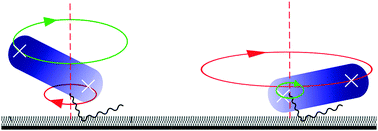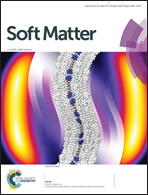Synchronization in pairs of rotating active biomotors
Abstract
Although synchronization is a well-known physical phenomenon, experimental studies of its emergence in living bacterial cells are still scarce. The difficulty in generating a controlled scenario to detect synchronization has limited the experimental outcomes so far. We present a realization based on holographic optical tweezers in which adhered pairs of self-propelled bacteria rotate in a plane. The separation distance between the bacteria determines the strength of the hydrodynamic coupling. Despite the noisy environment and autonomous dynamics of the living bacteria, we find evidence of phase locking and frequency entrainment in their rotation. The observation of higher order frequency synchronization is also discussed.



 Please wait while we load your content...
Please wait while we load your content...